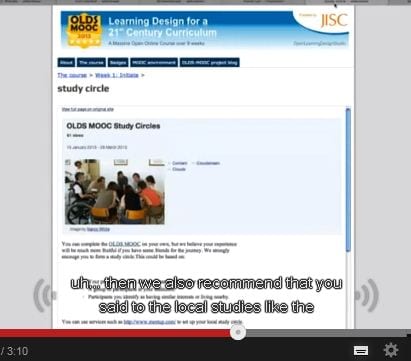No weekend break on a MOOC. Activities were scheduled throughout Week 1 and by Day 5 (today) I should have a team, a study circle and be ready to brainstorm. (For anyone cringing at the use of the word brainstorm look here for the latest thinking).
So far I have:
- a profile on Cloudworks http://cloudworks.ac.uk/user/view/4427
- a proposal cloud http://cloudworks.ac.uk/cloud/view/7042
- a proposal Cloudscape http://cloudworks.ac.uk/cloudscape/view/2743
- a Cloudscape Cloud proposal overview http://cloudworks.ac.uk/cloud/view/7300
Are you keeping up? Over on Google Groups I’ve posted a new thread on my proposal https://groups.google.com/forum/#!topic/olds-mooc-open/xy_0GS1is74; I’ve also tweeted via #OLDSMOOC. I’ve tried to create a Google Hangout and failed so far.
My problem is linking interested people. Already I’ve had an gentle email suggesting some of my responses have been in the wrong place! I’m not sure on MOOC-ing protocols – should I chase people or wait for them to contact me? Up to now I’ve been proactive but have concerns about the time needed to keep on top; as this week goes on there will be even less time available. Actually getting started with the Online Learning Design seems a long way off. I’m still trying to get familiar with the clouds, groups and hangups. It seems unless everyone is in the same place it’s hard to make connections.
For me, the broad range of technology on OLDSMOOC is a barrier. Good learning curve but it replicates what often happens when technically competent people lead those further across on the spectrum of technical confidence. I’m not exiting the MOOC building yet; I think once the group is established with agreed lines of communication then contact with will be quicker and easier – but I haven’t got there yet!
If anyone would like to join my group, I’ve proposed developing a user guide to staff adopting a DIY approach to using audio and video in their teaching; this will cover the media capture and production and be aimed at the beginner – and my preferred mode of contact remains my work email swatling@lincoln.ac.uk 🙂
